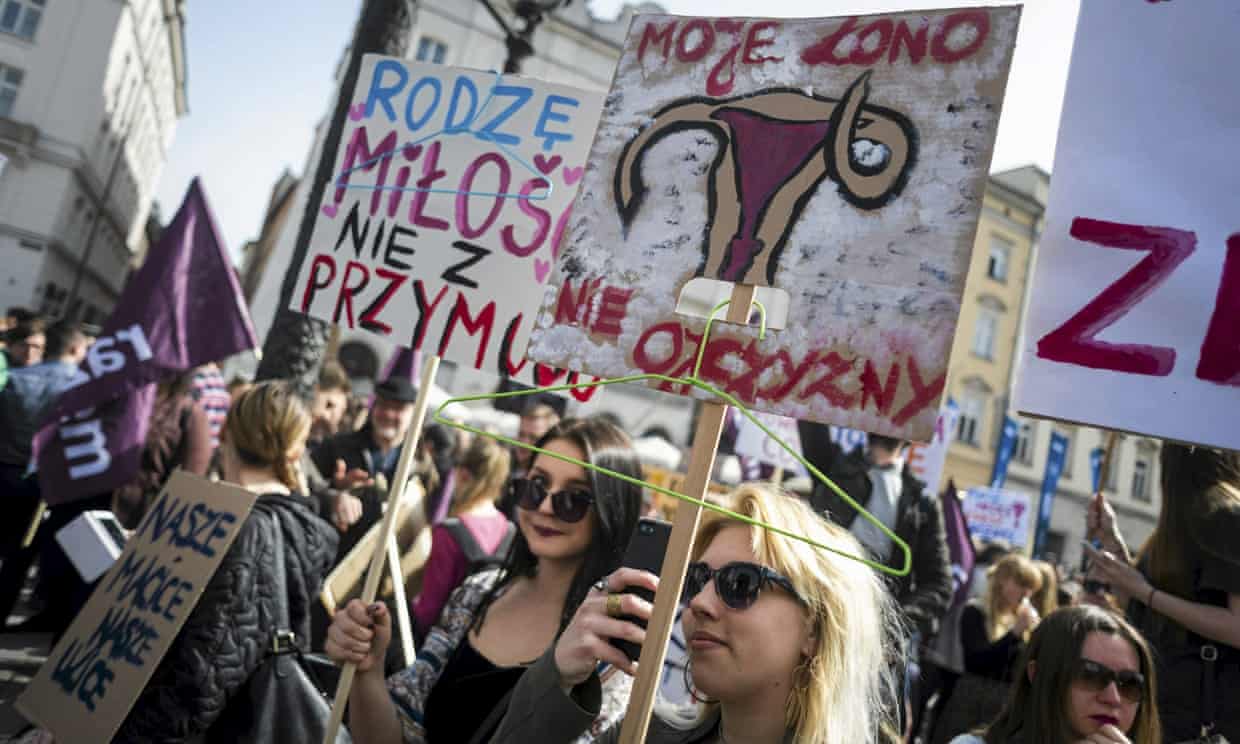By Sarah Lafen
Impunity Watch Desk Reporter, Europe
WARSAW, Poland — Polish legislators have proposed a law which would criminalize abortions. If passed, the law would apply to both women seeking abortions as well as doctors and other medical staff who are involved in the performance of the procedures. These parties would be subject to jail time between three months and five years for causing “the death of a conceived child.” The proposed legislature was drawn up by a rightwing think-tank, with the support of the Catholic Church and the Law and Justice governing party.

Current abortion laws in Poland permit abortion only in the cases of rape, when the fetus is diagnosed with a severe or irreversible disability or an incurable illness which is threatening its life, or if the woman’s life is in danger. The new proposed law would permit abortions only when the mother’s life is in danger.
Protesters have staged demonstrations in opposition to this proposed legislation in cities across Europe. Thousands of human rights activists gathered in Warsaw, Poland outside of the Polish parliament on Sunday, while another demonstration occurred outside of the Polish embassy in London, England. Pro-abortion campaign called “Save Women” compiled approximately 215,000 signatures in opposition of the proposed legislature. These protestors argue that if passed, this bill would encourage women to have “dangerous, back alley abortions.”
On the other side, the pro-life bill has collected approximately 450,000 signatures. Mariusz Dzierżawski, head of Poland’s “Stop Abortion” committee, claims that 58% of Poles currently back the proposed legislature. Dzierżawski says that the legislature is necessary because “about 1,000 unborn children are legally killed in Poland each year.” In April, the Catholic Church voiced its support for the passing of the proposed legislature. Polish bishops want the bill passed in order to “protect every person’s life from conception to natural death.”
Official studies estimate that less than 1,000 legal abortions are performed each year in Poland as it is – as doctors are scared of suffering the repercussions of performing the procedure. However, other independent research groups have estimated that 80,000-190,000 women undergo the procedure annually in Poland, whether through the “back alley” methods, or by traveling abroad.
Polish legislators are set to consider the bill on Wednesday.
For more information, please see:
New Europe — Poland Tables New Bill to Criminalize Abortion — 19 September 2016
Motto — This Polish Law Would Imprison Women Who Have Abortions — 16 September 2016







